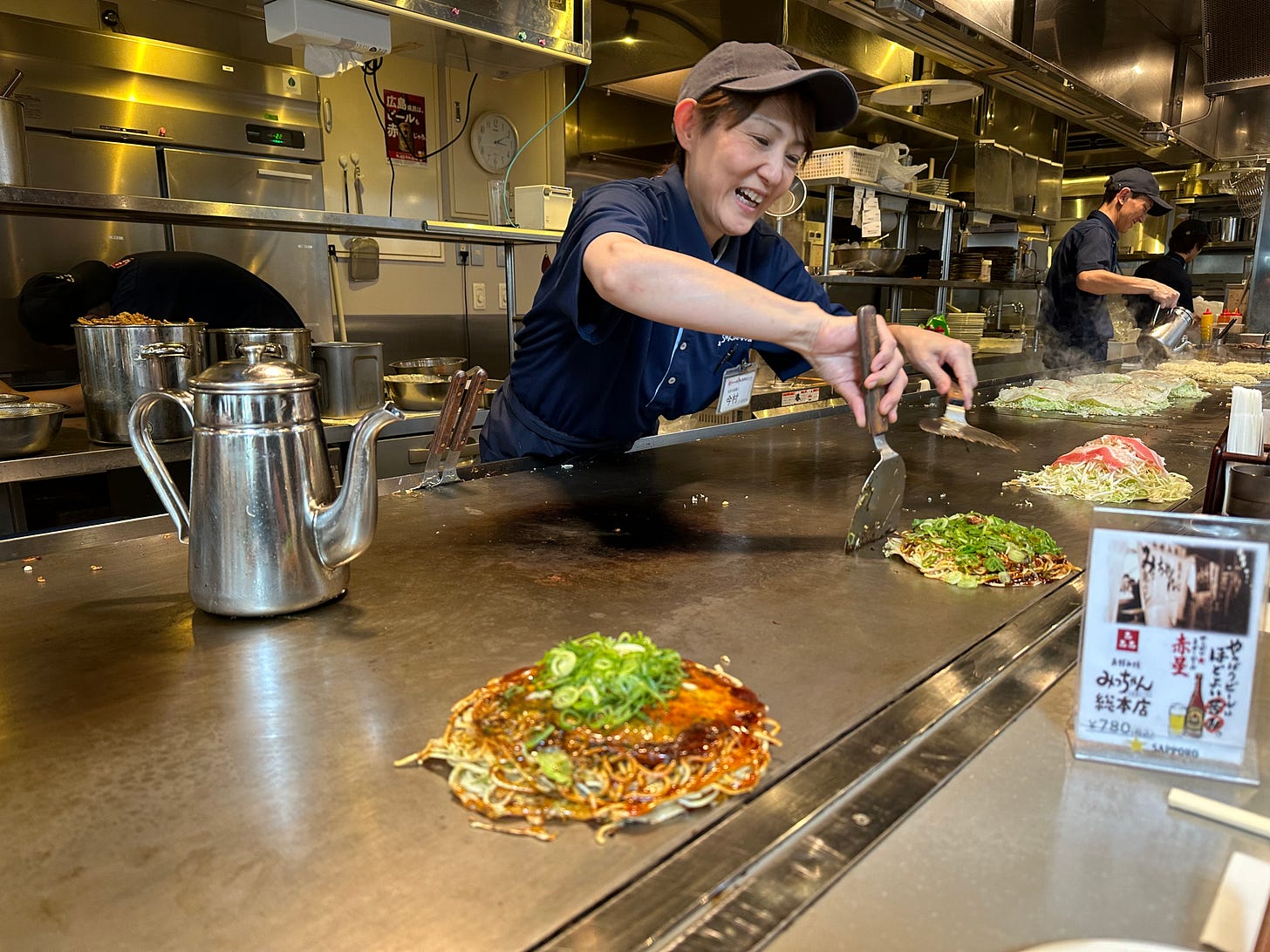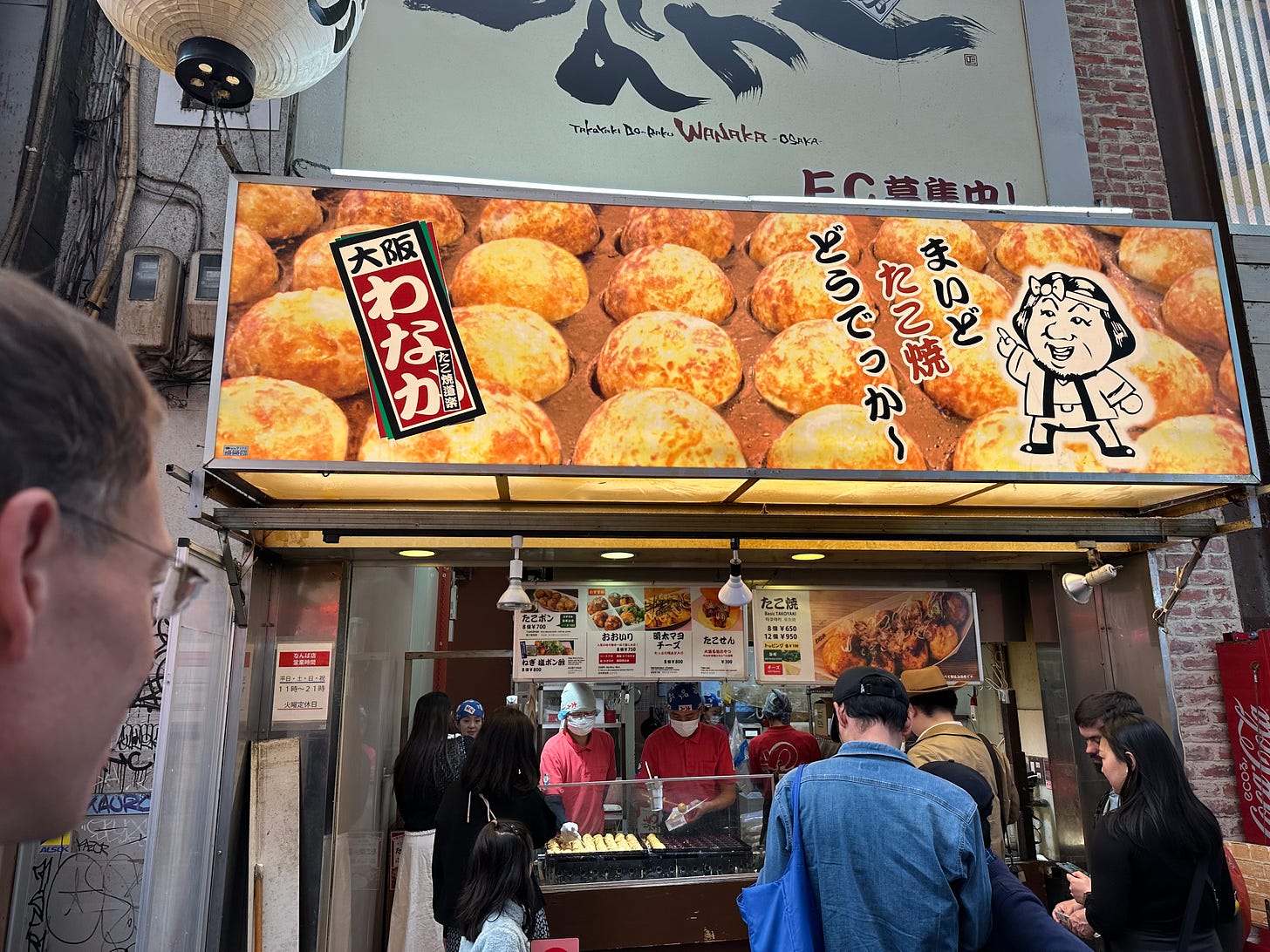Last missive from Japan: Last weekend we took the bullet train from Okayama to Hiroshima to see the Atomic Bomb Dome and Hiroshima Peace Memorial Museum. To my shame, I hadn't thought about Hiroshima in a long time, and whenever I thought or read about World War II, rarely thought about what happened in Japan. (This was despite seeing Christopher Nolan's Oppenheimer last summer.) The Hiroshima Peace Memorial Museum tells the stories of the 100,000 plus people who were killed, mutilated or burned when the U.S. dropped the atomic bomb on Hiroshima at 8:15 a.m. on August 6, 1945. The memorial is huge, intimate and devastating.
The sections devoted to "Hiroshima on August 6" and "Victims and Survivors" include stories and drawings of hot and thirsty people drinking the radioactive black rain that fell from the sky after the bomb detonated, and those who died "without knowing what happened to them." There is a re-creation of the dropping of "Little Boy," shown from the aerial view of Paul Tibbets, who piloted the Boeing B-29 Superfortress Enola Gay that dropped the bomb. The B-29 was named after Tibbets' mother. In a 2001 interview, Tibbets recalls thinking, "I may take some lives but I'll save many more." He could taste the radiation in his mouth.
There are stories accompanying the photos of survivors with horrific burns and keloids, and a photo history of the Breakdown of Family N, which details what happened to a fisherman and his four children after the bomb was dropped---the father contemplated killing his children and himself. He didn't but never recovered his mental health. There are so many stories of people losing everyone they loved, babies being born with abnormally small heads, survivors losing their way and their minds. The message is clear: The damage done by nuclear weapons is hellish.The Peace Memorial is sobering but not everything is grim in Hiroshima. In kind of a reverse shiva, we took a ferry to the beautiful island of Miyajima, visited the Itsukushima "floating" shrine and ate lunch before visiting the Peace Memorial. A lovely guide took us and talked all morning about the delicious oysters and okonomiyaki we'd eat. The baked oysters in Miyajima were excellent. But it was the okonomiyaki we had at Mitchan Sohonten in Hiroshima that was beyond delicious. (Lunch for three was roughly $18.) Okonomiyaki is a Japanese pancake made by cooking batter on a griddle and then adding toppings. You take a seat at the counter in front of the griddle and watch yours get made. The batter is made with flour and water and topped with a huge pile of ingredients: Ours included what our guide called "tempura scraps," loads of cabbage and beansprouts, fried noodles, slices of pork belly, scallions and special okonomiyaki sauce (Worcestershire sauce thickened by potato starch.) You are instructed to slice your okonomiyaki with a spatula and eat it right off the grill. You can add mayonnaise and soy sauce (I did). It seems only fair to include a closeup of this deliciousness. From Hiroshima, we took a train to Osaka, a.k.a. "Japan's kitchen," famous for its street food. We wandered streets crammed with food stalls and ate takoyaki (octopus balls), pork-filled steamed buns and fried gyoza. Servings were enormous. We landed in the basement of Takashimaya department store, a food market crammed with goodies, kind of a Japanese Zabar's. Many department stores in Japan have food markets in their basements (depachika)- an excellent way to drive traffic.By mid-afternoon, I was in a food coma. A strong iced coffee from Doutor cut my glut. We rolled into the bar at the St. Regis hotel and our waiter immediately delivered one crystal bowl filled with sweet and salty cashews and another filled with chocolate truffles- true bliss.Our last afternoon in Osaka, we took a three-hour cooking class and made chicken and fish dashi (soup stock), chicken gyoza and ramen. You don't go to Osaka to lose weight.On our way back to Tokyo, I texted our yoga instructor, Mariko. Mariko was flying to Japan to see her family and I thought we might meet up. My husband and I take yoga with Mariko Sunday mornings and she had set our trip in motion. A former professional ballet dancer, Mariko is calm, wise and beautiful. She also teaches a kick-ass yoga class. At one point, she was going to run a yoga treat in Japan in November. She's now running the retreat in April. You can read more about Mariko's April yoga retreat in Japan here.
To everyone who has read along with me as I wrote our way through Japan: Arigatō, mata aimashō ありがとう、また会いましょう.
** Shout out to our Mirojima and Hiroshima guide, Sanae Yamashina.Monday, November 18, 6 p.m: I’ll be doing a live Q&A at Shakespeare & Co. with Julie Fingersh, author of the new memoir, Stay: A Story of Family, Love, and Other Traumas. We wrote about Julie’s fantastic book here. We’ll discuss her writing and publication process and the writing life.









Wow this is such a wonderful piece of writing and armchair journalism. Makes anyone want to go to Japan!
Amazing Laura! Your message about Hiroshima made me cry, but I was elevated and hungry when you shared your beautifully curated “food porn”! I would go just to eat!
See you soon and safe travel home.
Bec